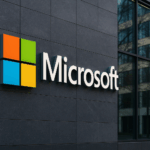As technology propels forward, the demand for machines that can understand and respond to touch has never been greater, particularly in sectors like robotics and healthcare. Many tactile sensing technologies have struggled with cost and reliability issues, limiting their broader application. Breaking into this space, Brighter Signals introduces its innovative approach from its base in Amsterdam, leveraging sensor technology that mimics human skin functionality. This advancement allows a singular, flexible layer to detect contact, pressure depth, and movement direction, simplifying traditional multi-sensor setups.
Previously, tactile sensors were characterized by their prohibitive cost and unreliable performance, often failing to achieve the versatility needed for diverse real-world applications. Various attempts have sought to address these challenges, but consistently fell short on key parameters such as affordability and accuracy. Brighter Signals distinguishes itself by focusing on creating a tactile sensor that aligns performance with practicality, potentially setting a new standard in the field.
How Did Brighter Signals Get Its Name?
The challenge of naming a startup often looms large for founders, and Brighter Signals was no exception. Andrew Klein, the CEO, reflects on the importance of selecting a name that resonated on multiple levels.
“Names are hard; finding one that is meaningful, pronounceable, and available as a URL is a task,”
Klein emphasized while explaining the methodical yet expedited process they undertook over a single week to arrive at the brand name.
Is “Brighter Signals” More Than Just a Name?
Rooted in a direct representation of its mission, the name Brighter Signals underscores the company’s goal to refine how data is extracted and utilized from environmental cues. Klein encapsulates this by stating,
“Signals that are smarter? Brighter Signals BV—it’s pretty direct,”
underscoring their clarity of vision. The brand intends to make not just clearer, but brighter signals, matching their strategic objectives with their naming choice.
After a focused week, the Brighter Signals name cleared potential legal issues, an outcome Klein found surprisingly smooth in the usually fraught domain of trademark registration. This clarity in legal navigation is paired with confidence in the brand’s identity, with no current plans for a name change as the company scales. Klein firmly indicates that consistency in branding is a priority, rejecting notions of future rebranding endeavors.
Despite a seemingly effortless journey to branding, Klein suggests that while a name is not the sole determinant of startup success, it is crucial to eliminate initial hurdles. Having a strong, available name and URL provides a solid starting point, helping to mitigate the complexities of launching a company.
With substantial progress in tactile sensing, Brighter Signals is poised to influence how machines interact with their environments. By offering simpler and more reliable touch-sensitive solutions, the company positions itself to address present needs in various industries. Their name and mission reflect an innovation-driven approach, promising improvements in how tactile interactions are understood and implemented.










